GRAPH THE FUNCTION USING TRANSFORMATIONS EXAMPLES
Subscribe to our ▶️ YouTube channel 🔴 for the latest videos, updates, and tips.
Here we are going to see, how to graph the function using transformations.
Reflection :
A reflection is the mirror image of the graph where line l is the mirror of the reflection.

Here f' is the mirror image of f with respect to l. Every point of f has a corresponding image in f'. Some useful reflections of y = f(x) are
(i) The graph y = −f(x) is the reflection of the graph of f about the x-axis.
(ii) The graph y = f(−x) is the reflection of the graph of f about the y-axis.
(iii) The graph of y = f−1(x) is the reflection of the graph of f in y = x.
Translation :
A translation of a graph is a vertical or horizontal shift of the graph that produces congruent graphs.
The graph of
y = f(x + c), c > 0 causes the shift to the left.
y = f(x − c), c > 0 causes the shift to the right.
y = f(x) + d, d > 0 causes the shift to the upward.
y = f(x) − d, d > 0 causes the shift to the downward.
Consider the functions:
(i) f(x) = |x| (ii) f(x) = |x − 1| (iii) f(x) = |x + 1|
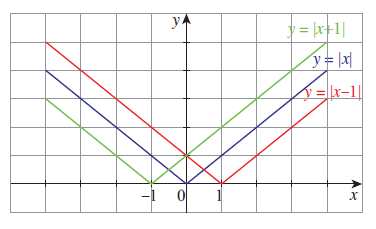
Dilation :
Dilation is also a transformation which causes the curve stretches (expands) or compresses (contracts). Multiplying a function by a positive constant vertically stretches or compresses its graph; that is, the graph moves away from x-axis or towards x-axis.
If the positive constant is greater than one, the graph moves away from the x-axis. If the positive constant is less than one, the graph moves towards the x-axis.
Consider the functions:
(i) f(x) = x2 (ii) f(x) = (1/2) x2 (iii) f(x) = 2x2
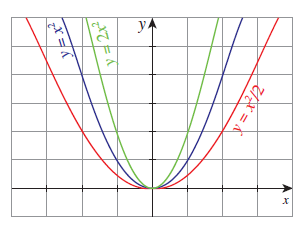
Example 1 :
Graph the functions f(x) = x3 and g(x) = 3√x on the same coordinate plane. Find f ◦ g and graph it on the plane as well. Explain your results.
Solution :
f(x) = x3 and g(x) = 3√x
f ◦ g (x) = f [ g (x) ]
= f (x1/3)
= (x1/3)3
f ◦ g (x) = x
|
y = x3 if x = -2, then y = -8 if x = -1, then y = -1 if x = 0, then y = 0 if x = 1, then y = 1 if x = 2, then y = 8 |
y = x1/3 if x = -8, then y = -2 if x = -1, then y = -1 if x = 0, then y = 0 if x = 1, then y = 1 if x = 8, then y = 2 |
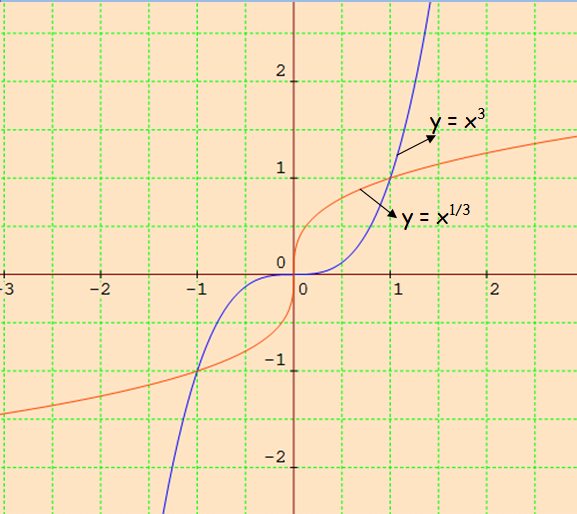
f(x) = x3
Let y = x3
Let us find the inverse function, for that we have to solve for x.
x = y1/3
Now we have to replace "x" by "f-1(x)" and "y" by "x".
f-1(x) = x1/3
By finding inverse of the given function, we get the other function.
Note : The graph of y = f−1(x) is the reflection of the graph of f in y = x.
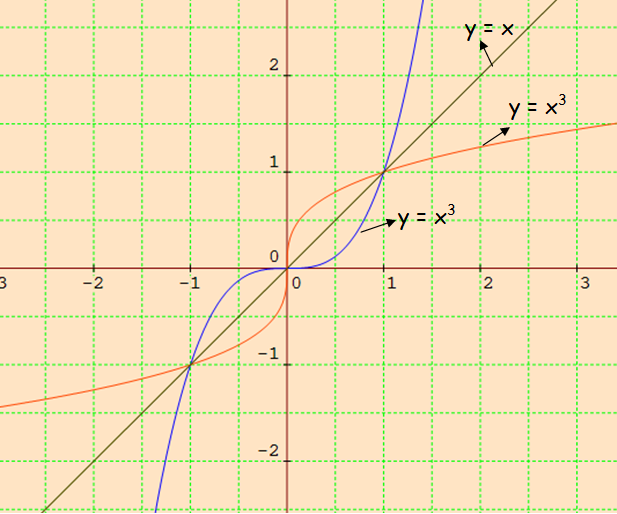
Example 2 :
Write the steps to obtain the graph of the function y = 3(x − 1)2 + 5 from the graph y = x2
Solution :
Step 1 :
By graphing the curve y = x2, we get a open upward parabola with vertex (0, 0).
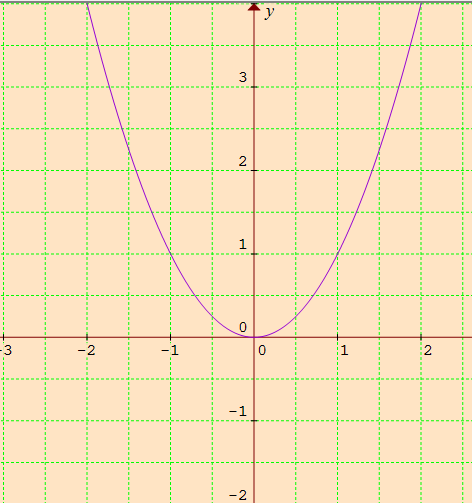
Step 2 :
Here 1 is subtracted from x, so we have to shift the graph of y = x2, 1 unit to the right side.
Step 3 :
The positive number 3 is multiplied by (x-1) which is greater than 1, so we have to compress the curve y = (x-1)2 towards y-axis.
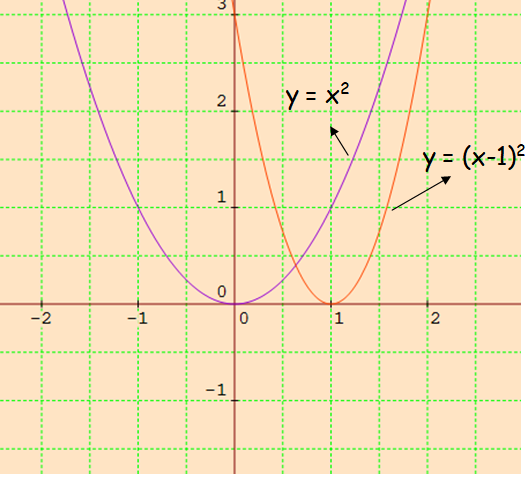
Step 4 :
5 is added to the function, so we have to move the graph of y = 3(x-1)2, 5 units to the left side.
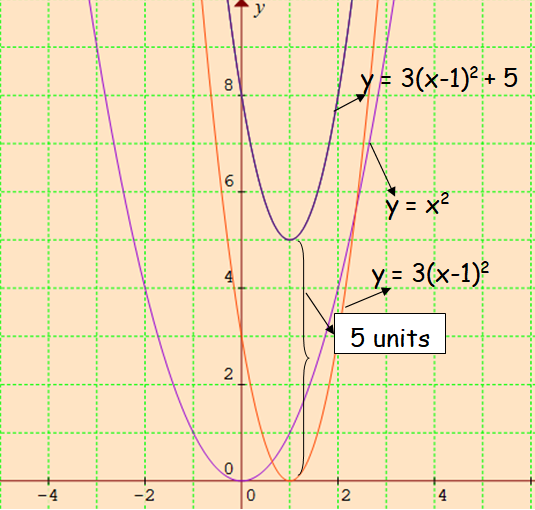
Subscribe to our ▶️ YouTube channel 🔴 for the latest videos, updates, and tips.
Kindly mail your feedback to v4formath@gmail.com
We always appreciate your feedback.
©All rights reserved. onlinemath4all.com
Recent Articles
-
Digital SAT Math Problems and Solutions (Part - 7)
Nov 26, 25 09:03 AM
Digital SAT Math Problems and Solutions (Part - 7) -
Hcf and Lcm Word Problems
Nov 21, 25 09:03 AM
Hcf and Lcm Word Problems -
10 Hard SAT Math Questions (Part - 35)
Nov 21, 25 07:36 AM
10 Hard SAT Math Questions (Part - 35)
